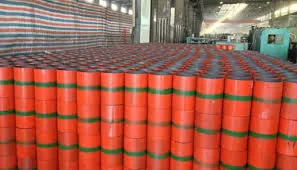- Afrikaans
- Albanian
- Amharic
- Arabic
- Armenian
- Azerbaijani
- Basque
- Belarusian
- Bengali
- Bosnian
- Bulgarian
- Catalan
- Cebuano
- Corsican
- Croatian
- Czech
- Danish
- Dutch
- English
- Esperanto
- Estonian
- Finnish
- French
- Frisian
- Galician
- Georgian
- German
- Greek
- Gujarati
- Haitian Creole
- hausa
- hawaiian
- Hebrew
- Hindi
- Miao
- Hungarian
- Icelandic
- igbo
- Indonesian
- irish
- Italian
- Japanese
- Javanese
- Kannada
- kazakh
- Khmer
- Rwandese
- Korean
- Kurdish
- Kyrgyz
- Lao
- Latin
- Latvian
- Lithuanian
- Luxembourgish
- Macedonian
- Malgashi
- Malay
- Malayalam
- Maltese
- Maori
- Marathi
- Mongolian
- Myanmar
- Nepali
- Norwegian
- Norwegian
- Occitan
- Pashto
- Persian
- Polish
- Portuguese
- Punjabi
- Romanian
- Russian
- Samoan
- Scottish Gaelic
- Serbian
- Sesotho
- Shona
- Sindhi
- Sinhala
- Slovak
- Slovenian
- Somali
- Spanish
- Sundanese
- Swahili
- Swedish
- Tagalog
- Tajik
- Tamil
- Tatar
- Telugu
- Thai
- Turkish
- Turkmen
- Ukrainian
- Urdu
- Uighur
- Uzbek
- Vietnamese
- Welsh
- Bantu
- Yiddish
- Yoruba
- Zulu
well tubing and casing
Understanding Well Tubing and Casing Essential Components in Oil and Gas Production
In the oil and gas industry, the extraction of hydrocarbons from beneath the Earth's surface is a complex process that requires careful planning and execution. Among the critical components that facilitate this process are well tubing and casing. Both play a vital role in maintaining the integrity of the well, ensuring safety, and enhancing production efficiency.
What is Casing?
Casing refers to the series of steel pipes that are installed in the drilled wellbore to provide structural support. It acts as a barrier preventing the surrounding rock and soil from collapsing into the well, thus protecting both the wellbore and the environment. Casing is crucial for isolating different pressure zones and preventing the contamination of groundwater aquifers. It is generally installed in sections, beginning from the surface down to the production zone. Each section of casing varies in diameter and strength, depending on the specific geological conditions of the area and the depth of the well.
The process of casing installation involves several steps. Initially, a wellbore is drilled to the desired depth, followed by the insertion of the casing. The annular space between the casing and the wellbore is then filled with cement to secure the casing in place and provide additional support. The cement also serves to seal off potential pathways for fluids that could lead to environmental contamination.
There are various types of casing, including surface casing, intermediate casing, and production casing, each serving different purposes throughout the drilling process.
The Role of Tubing
well tubing and casing

Tubing, on the other hand, is a much smaller diameter pipe that is inserted within the casing once the well has been completed. Its primary function is to transport the extracted oil or gas from the production zone to the surface. The tubing must be strong enough to withstand the pressure and temperature of the fluids being extracted, and is typically made of high-grade steel that is resistant to corrosive gases and fluids.
The design and installation of tubing involve significant engineering considerations. From the gauge or size of the tubing to the method used for connecting sections, every detail is optimized to maximize production efficiency. A common practice is to install production tubing along with a packer, which is a device that seals the space between the tubing and casing, ensuring that fluids flow directly to the surface without leakage.
Importance of Well Maintenance
Both casing and tubing require regular monitoring and maintenance to ensure their ongoing functionality. Over time, corrosion, wear and tear, and other operational stresses can compromise their structural integrity. Implementing regular inspection protocols, such as using downhole cameras and advanced sensors, plays a critical role in identifying potential issues before they escalate into major problems.
Proper maintenance not only extends the life of casing and tubing but also enhances the overall productivity of the well. For example, if corrosion starts to compromise the tubing, it could lead to leaks, resulting in lost production and expensive repairs.
Conclusion
In summary, well tubing and casing are indispensable elements in the successful extraction of oil and gas. Casing maintains the structural integrity of the well and prevents contamination, while tubing facilitates the effective transport of hydrocarbons to the surface. Both components require careful planning, execution, and ongoing maintenance to ensure optimal performance and safety. As the energy industry continues to evolve, advancements in materials and technology will further enhance the effectiveness of casing and tubing, paving the way for more efficient and sustainable production practices. Understanding these components is essential for anyone involved in the oil and gas sector, as they are central to the overall success of drilling operations.
-
Tubing Pup Joints: Essential Components for Oil and Gas OperationsNewsJul.10,2025
-
Pup Joints: Essential Components for Reliable Drilling OperationsNewsJul.10,2025
-
Pipe Couplings: Connecting Your World EfficientlyNewsJul.10,2025
-
Mastering Oilfield Operations with Quality Tubing and CasingNewsJul.10,2025
-
High-Quality Casing Couplings for Every NeedNewsJul.10,2025
-
Boost Your Drilling Efficiency with Premium Crossover Tools & Seating NipplesNewsJul.10,2025







